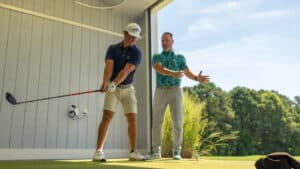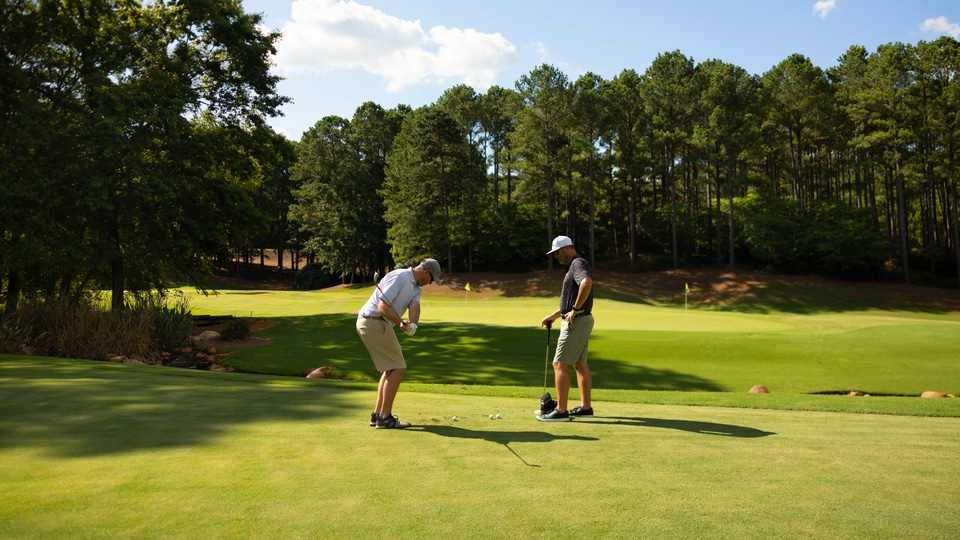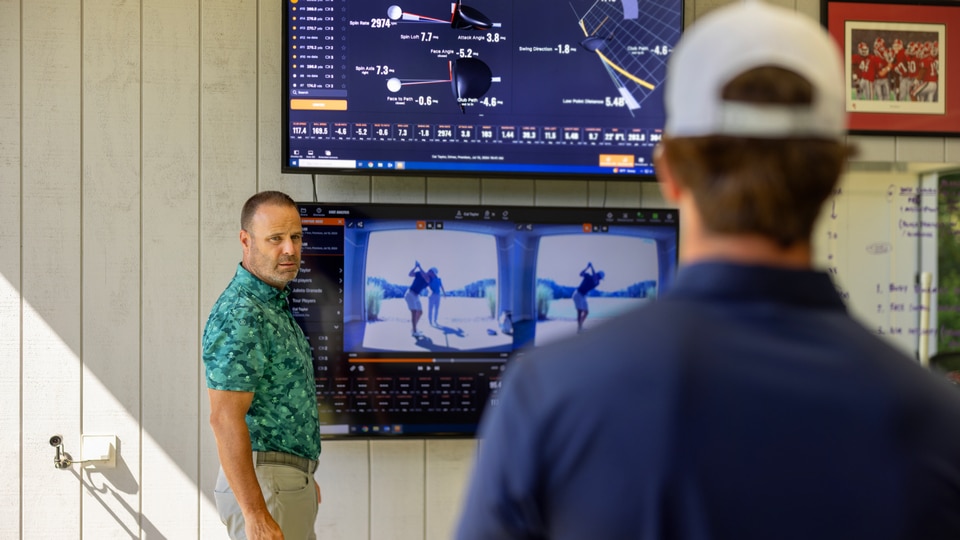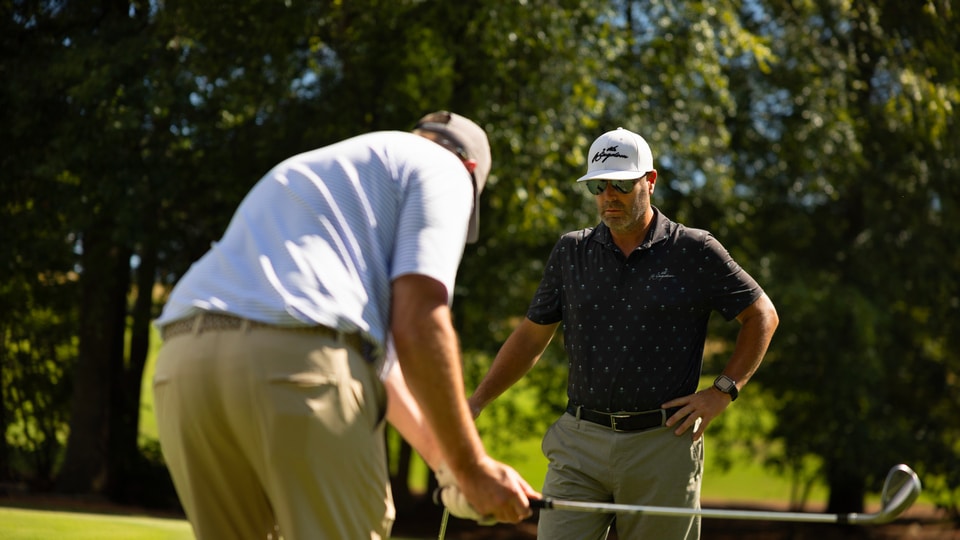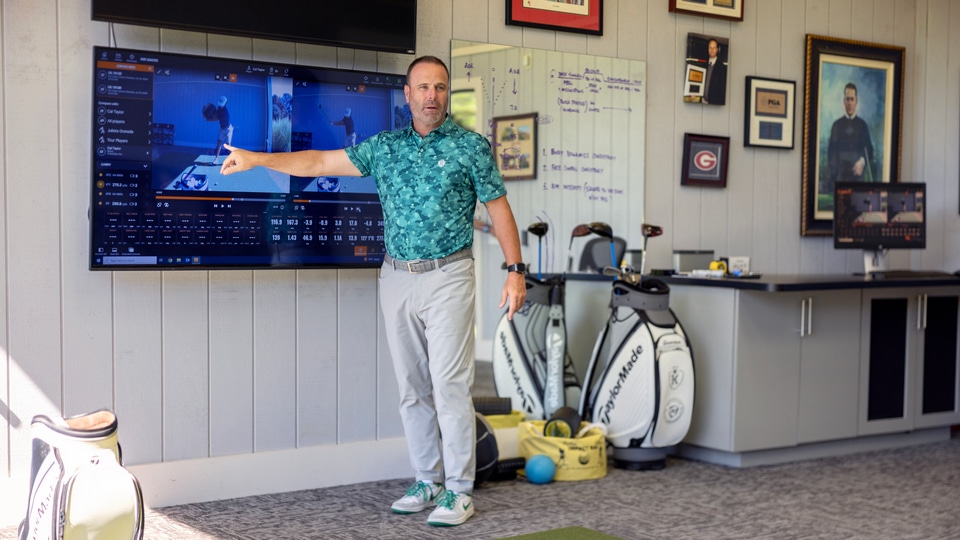Who is Sean Cain?
Joined The Kingdom at Reynolds Lake Oconee in 2018 and is an award-winning golf professional who began working in the golf industry as a 16-year-old at Chateau Élan Golf Club (Braselton, Ga.) in 1990.
Since that early start on his career, Cain has worked in almost every aspect of the golf business, at both public and private courses, in agronomy, event sales and coordination, as a cart attendant and in merchandising.
Cain returned to Chateau Élan in 2004, serving as the head golf professional at the Legends Course for twelve years. Since 2011, Cain has instructed/coached over 30 junior golfers to Division I scholarships, two collegiate All-Americans, amateurs ranked in top-25 in the world rankings, four PGA Tour player and numerous Web.com and Developmental Tour players.
Hailing from Winder, Ga., Cain was a member of the golf team at Shorter University in Rome, Ga., earning all-conference honors in 1994-95. Cain holds a bachelor’s degree in business management and marketing from Shorter and has attained his Class A membership in the PGA of America.
Cain was named the 2018 Georgia PGA North Chapter Teacher of the Year, and previously was 2013 Georgia PGA North Chapter Professional of the Year.
***
The Cain Story
My career shifted dramatically in 2009 when I took a spiritual gifts test at church and discovered that my number one gift was teaching; something I hadn’t even considered other than normal obligations as a PGA professional to that point in time.
I had always had a very distasteful outlook and attitude towards golf instruction. I had been around many instructors and had many friends playing on the PGA Tour. In all honesty, I really felt that the majority of players would have been on tour no matter what instruction they had received and thought that the instructors were getting too much credit and too much blame for performance.
This led me down a path to try to discover what the “real truth” was in the golf swing, short game and putting. I began a four-year journey, read most of the leading theoretical books on golf swing mechanics, and did not really come away with anything but more confusion.
However, at the end of that journey by complete chance I met two people who changed that forever. The first was Mike Adams, who presented me with a framework of the biodynamics of the swing, which concludes that our anatomy dictates most of our swing mechanics.
The second was Chad Cook, one of the leading functional movement and MAT specialists in the world. Chad and I met, as he wanted someone who was in the golf industry to help him navigate how to apply his skills.
His knowledge took the framework I had learned from Mike and cleared up all of the confusion I had for 20 years. Chad was not coming from a golf background. He was coming from a full body biomechanical background, and it changed my life forever.
***
What is the approximate percentage of golfers coming to The Kingdom not properly fitted?
Well over 95% even being conservative.
We see 750-800 clients each year and there are less than 15 of them who have been fitted correctly in the past.
Biggest misconception golfers have when being fitted is what?
The biggest misconception is that they are not good enough to be fitted.
They do not understand how much the wrong equipment impedes their progress of improvement.
Golfers are limited to a max of 14 clubs. Should players be using drivers with 45.5 inches of length?
Yes, most of the reasons that the average golfer hits driver so inconsistently is because it either has been bought off the shelf or has been ill fit.
When properly fit you want as much firepower as attainable.
What about fairway metals? Most 3-metal clubs are at 15 degrees of loft. Is this sufficient loft when attempting to get a ball airborne from turf? What’s the best remedy on this?
Speed is the main factor in the loft of the fairway wood.
Loft presented at impact is the second. With all woods, fitting the correct shaft to match natural delivery tendencies is the main factor to maximize efficiency.
Many players still keep a 5-iron in their bags. Should average players begin an iron set with 6 and higher?
Once again it all is determined by swing speed and loft presented at impact, so it is different for everyone.
Center of gravity in the club will be the main factor to attain optimal performance whether it is an iron or a hybrid.
Do 60-degree wedges have a role to play for average players?
It all depends on the client and their history with them. Some have used them for so long they have adapted their short game around them and changing it is futile.
However, for most the variables of impact are too tight for them to be consistent with a high lofted wedge unless its bounce characteristics are what is favorable.
What role do proper grips play in enhancing performance?
It is not a huge difference for most people, but fine-tuning the proper grip can definitely have delivery consistency implications. There are many variables that differ from person to person, but grip size is part of the equation.

Related: Doug Coors interview
What’s the biggest mistake average golfers make when practicing?
They do not know what they really need to practice and have no forethought or why.
Keeping stats to understand the weakest area of their game is most of the time very enlightening for them. Then it will force them to change their habits.
What is the appropriate percentage of time for golfers practicing long and short games?
Putting with a focus on speed control should be 75% for all golfers, especially pre-round. 20% short game focusing on using different clubs for different shots with a central delivery motion. 5% full swing mainly just working on alignment and rhythm, most players don’t vary their swing as much as they think. It’s mis-alignment and bad rhythm that lead to inconsistency.
Putting makes up half the game in terms of stroke allotment. Do players have the right putter and what is the biggest error players generally make in terms of awareness and technique when putting?
Hence the percentage breakdown from above. Putter fitting is simple. It matches the type of putter to the stroke tendency. Most people have a very engrained delivery and therefore do not have an ability to really make significant changes.
Getting a putter to match that tendency is crucial for consistency. Then, having a standard putting routine and process that is repeated during practice will help develop an execution based result rather than a forced one.
***
For more info go to:
www.reynoldslakeoconee.com
